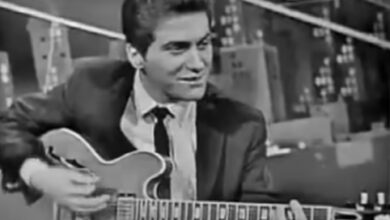From No-Hit Trio to Motown Legends: How ‘Where Did Our Love Go’ Launched The Supremes to Stardom
In the vibrant musical landscape of the 1960s, few songs captured the essence of the era like “Where Did Our Love Go” by The Supremes. Released in 1964, this track not only marked a turning point for the group but also left an indelible mark on the Motown sound that defined a generation. Its catchy melody and relatable lyrics resonated with audiences, propelling The Supremes to unprecedented fame.
The journey of The Supremes began in Detroit in 1958, when Florence Ballard, a junior high school student, met Paul Williams and Eddie Kendricks of the Primes. Inspired by their male counterparts, Ballard, along with Mary Wilson and Diana Ross, formed the Primettes. They performed at local events, quickly gaining a following with their harmonious vocals and youthful energy.
Despite their talent, the road to success was not immediate. The Primettes auditioned for Motown’s Berry Gordy, who felt they were too young and inexperienced. Undeterred, the group continued to hone their craft, eventually securing a contract with Motown in 1961 under a new name: The Supremes. However, their early releases failed to make a significant impact, earning them the nickname “no-hit Supremes” around the Motown offices.
Everything changed with “Where Did Our Love Go.” Interestingly, the song was initially offered to the Marvelettes, who declined it. The Supremes themselves were not enthusiastic about the track, feeling it lacked the strength of previous hits. Nevertheless, they recorded it, and the song’s success exceeded everyone’s expectations, reaching number one on the Billboard Hot 100 chart.
The success of “Where Did Our Love Go” was a testament to the synergy between The Supremes and the songwriting trio Holland-Dozier-Holland. This partnership produced a string of hits that showcased the group’s versatility and appeal. The song’s simplistic yet emotive lyrics, combined with Diana Ross’s distinctive lead vocals, created a formula that resonated with a wide audience.
Following this breakthrough, The Supremes enjoyed a series of chart-topping hits, including “Baby Love,” “Come See About Me,” and “Stop! In the Name of Love.” Their polished performances and glamorous image made them stand out, breaking racial barriers and appealing to both black and white audiences during a time of significant social change in America.
The group’s lineup experienced changes over the years. Florence Ballard departed in 1967 and was replaced by Cindy Birdsong. Diana Ross left in 1970 to pursue a solo career, with Jean Terrell stepping in as lead vocalist. Despite these changes, The Supremes continued to produce hits, though none matched the monumental success of their earlier work.
“Where Did Our Love Go” not only solidified The Supremes’ place in music history but also influenced countless artists. Its timeless appeal has led to numerous covers and adaptations across various genres, highlighting its enduring impact. The song’s success also paved the way for future girl groups, setting a standard for harmony, style, and performance.
Reflecting on the legacy of “Where Did Our Love Go,” it’s clear that the song encapsulates a pivotal moment in music history. It represents the convergence of talent, opportunity, and timing, resulting in a track that continues to captivate listeners decades after its release. The Supremes’ journey from the “no-hit” trio to international superstars is a testament to their resilience and the universal appeal of their music.
In conclusion, “Where Did Our Love Go” is more than just a song; it’s a cultural milestone that symbolizes the transformative power of music. The Supremes’ ability to connect with audiences through their emotive performances and relatable lyrics ensured their place in the annals of music history. Their story continues to inspire, reminding us of the enduring power of a great song.



